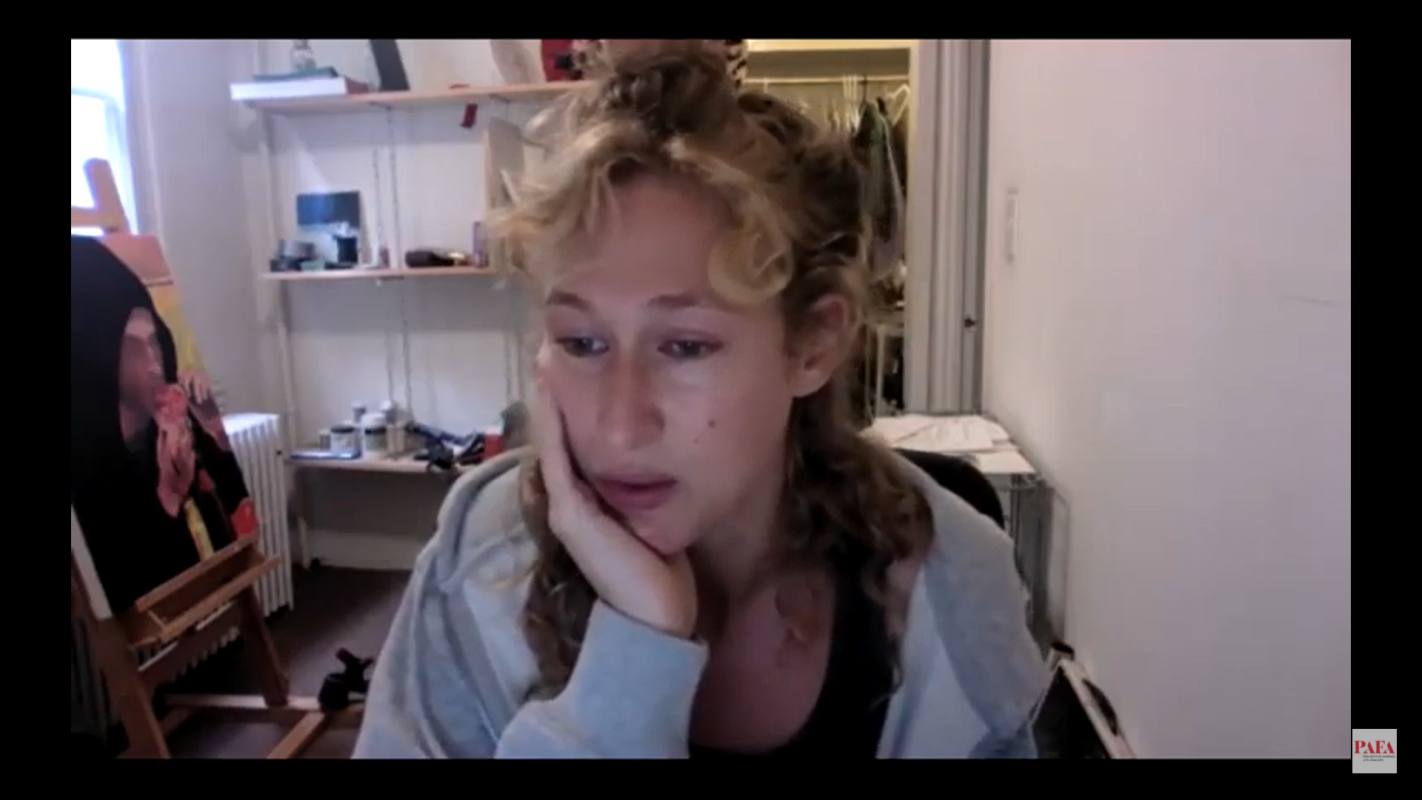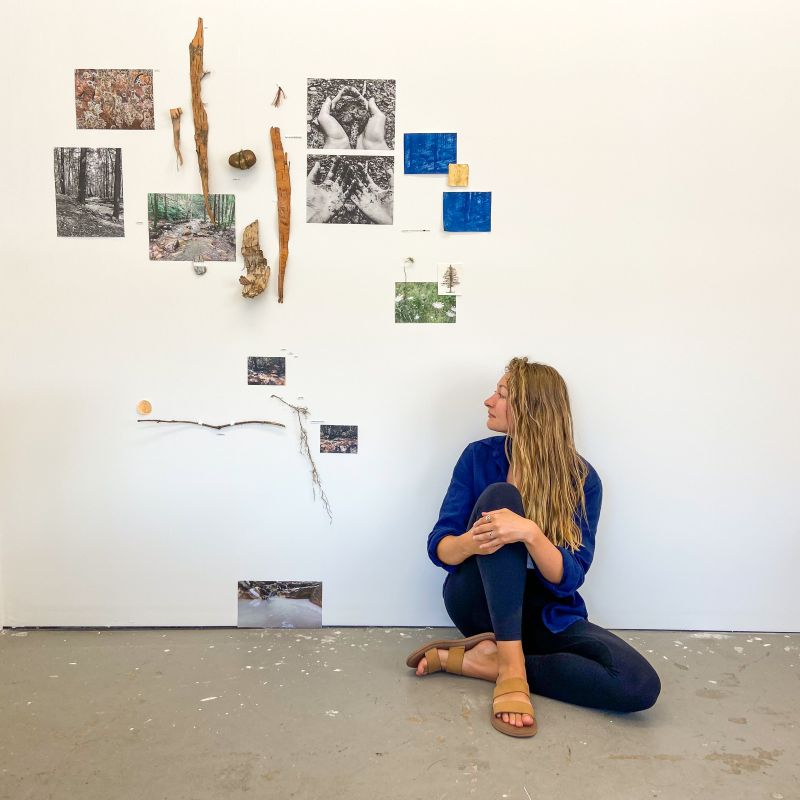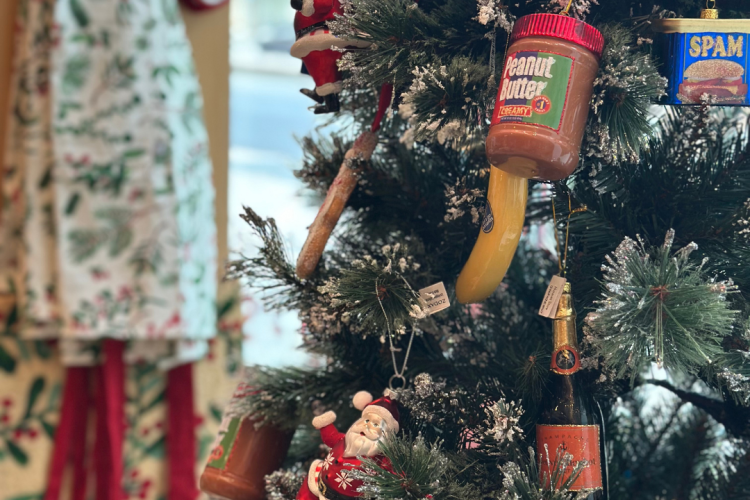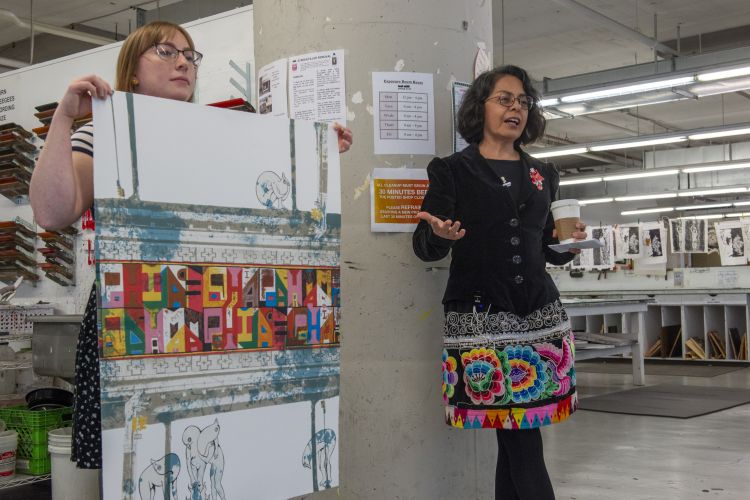STORIES FROM PAFA
Graduate Students Lead Visiting Artist Program to Benefit PAFA Community
This academic year Lily Jane Brown, Kristy Jane, and Marley Massey Parsons lead PAFA’s Visiting Artist Program. With untold opportunities for attendees and coordinators alike, the program is entirely student-run—Lily and Marley are enrolled in the Master of Fine Arts program and Kristy participates in the Low-Residency MFA program; all expect to graduate in 2022. Together the three women invite artists from around the region and globe to PAFA for lectures, critiques, and workshops, gathering varied outlooks for the benefit of their community.
We sat down with them recently to learn more about their goals for the program and what makes it so unique.
How did you get involved in the Visiting Artist Program?
Kristy Jane: During the pandemic, the 2020–2021 VAP coordinator team did an amazing job adapting the program to continue online, which gave off-campus MFA students full access to the program year-round. Low-Res MFA students were invited to apply for a coordinator position, and I am the first holding a VAP coordinator position.
Lily Jane Brown: I have known about the Visiting Artist Program since I started attending PAFA in 2019 and was immediately drawn to it. After my first semester attending the lectures, I knew that I wanted to be involved.
What skills have you learned from this leadership role?
Marley Massey Parsons: I have learned professional skills and mannerisms through email correspondence, working with a team, and designing promotional materials. This position requires great organization, which has been an important skill to put into practice.
LJB: Me too. I have learned how to better organize myself via the internet (I used to be a very pencil on paper kind of gal!) I am grateful for this opportunity to better skills that I used to find so intimidating.
KJ: The most important thing I have learned is what it feels like when my voice and decisions have power. The choices Lily, Marley, and I make about who we will invite is a responsibility that far outweighs the administrative work in the background. We are not only representing PAFA and our student body, we are also helping to create the art world we want to be part of.
That is a great responsibility! So how do you go about deciding which artists to invite in a way that is equitable? Do your mediums influence your choices for who to invite for lectures and critiques? What else do you consider?
KJ: First we try to have a variety of media and approaches represented. I thought about who I would want to represent if I had a gallery and who would offer critical feedback from different angles.
LJB: We want to find artists that the students can relate to, learn from, and look up to. We try to gauge our student body and understand what mediums or ideas have been floating around so we can cater to that as well.
KJ: Through my experience in the LRMFA program I have been shown PAFA's dedication to acknowledging the many voices and practices traditionally omitted from the field of painting and art history. We’re exploring new media and ever-widening philosophical approaches to making, and we look for VAP artists who embody that in their work.
What is something you have learned from a lecture or workshop?
KJ: When we get one on one time with a visiting artist and when they welcome us into their homes or studios for lectures, they model to us what our chosen career path looks like. For me, once I see it, I can be it!
LJB: I have learned there is no one way to be a successful artist. The most important component is having the conviction and passion to keep pushing your ideas.
MMP: I agree, Lily. Everyone's journey in art looks different. Each artist has their own unique track, and no matter how it looks, all that matters is that you are doing what you love.
The programming you put together is very popular. What do you think is so compelling about VAP lectures and critiques?
KJ: I feel really lucky to meet working artists that have been through what we are going through and want to share their wisdom with us.
MMP: This opportunity is unique! As a young artist, it is always beneficial to get feedback from someone outside of your cohort. The lectures are an opportunity to get a sneak peek into an artist's journey and process, which is inspiring.
LJB: Why would you not attend? These artists have made a living for themselves in one of the most competitive fields in the world. They are not only going to help grow your practice and hopefully give you a new way to view your work, but also expand your network and create potential future opportunities.
This program is a very special feature of PAFA. What else would you tell an artist who was considering PAFA?
MMP: I chose PAFA because of how experimental and explorative the program is. The faculty push you to try new things and really get to the seed of your work and practice.
KJ: I waited 20 years to go to graduate school and it was hard to get up the nerve, but I have been treated with so much dignity and respect, which I didn’t expect in an MFA program. From the first phone call I had with Sam Schetina in Graduate Admissions, I have felt welcome.


We're so excited you're planning to visit PAFA!
Make time for art — visit us Thursday to Sunday.
Before reserving your tickets, please review helpful information about museum hours, accessibility, building access, and special admission programs.
If you have any questions, feel free to reach out to us at visitorservices@pafa.org — we’d love to help!



